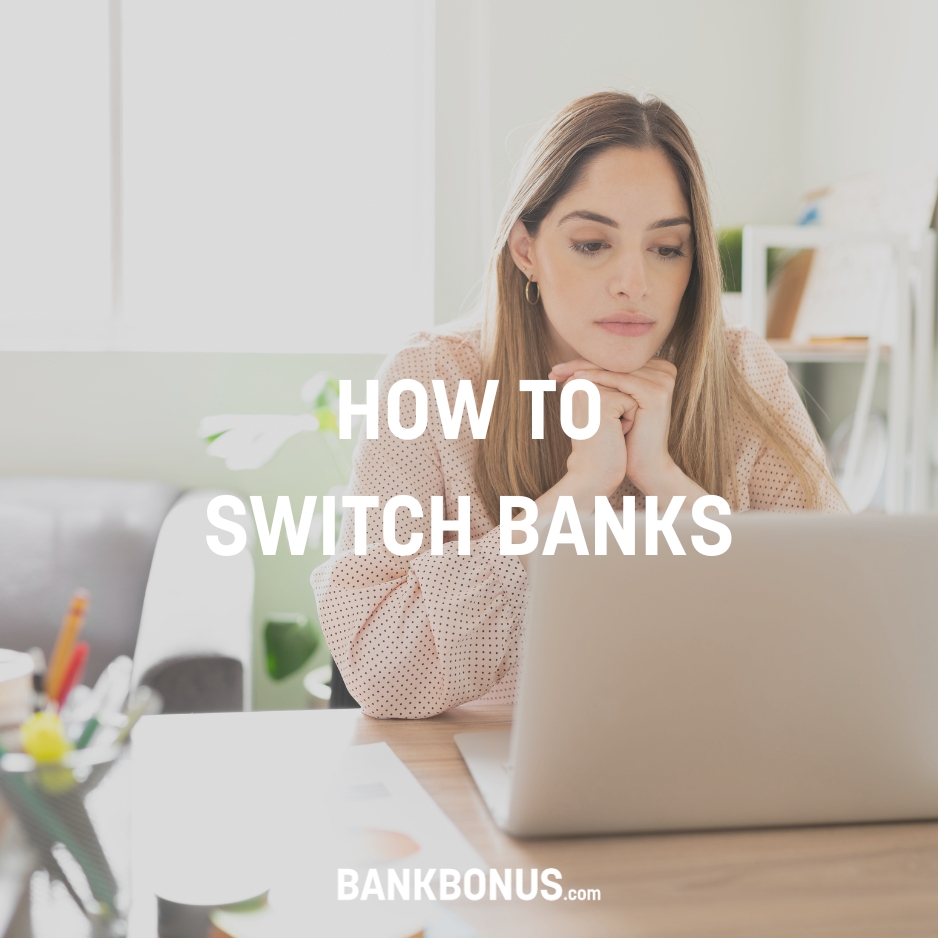Opening a new checking account is easy – once you know the type of bank you want to open it with and have found the right checking account.
The first step is understanding what’s important for you and what you want from a bank account, then find the account that best fits your needs.
Checking accounts can also have some requirements, so you’ll need to make sure you can meet them before applying.
In this article, we’ll be looking at everything you need to know when opening a checking account, including what you’ll need, how much it costs, and what requirements you can expect to fulfill before opening a checking account.
What to Consider Before Opening a Checking Account
Before you open a new checking account, you’re going to need to do a bit of work upfront to determine which account is best, and at which bank.
1. Compare Financial Institutions and What They Offer
Essentially there are three options: online bank, traditional bank, or credit union.
Each of these has its benefits, depending on the type of service you appreciate the most.
- Online Bank: Online banks are a relatively new type of bank. In most cases, they operate just like a traditional bank with one exception – they aren’t a bank branch you can visit. Not all online banks offer all of the services that traditional banks offer. If you are considering an online bank, be sure to check that they provide the services that are most important to you. On the plus side, online banks tend to have lower fees, better APY rates, and you can easily open a bank account online.
- Traditional Bank: Traditional banks are the banks we all know – the ones with branches in the neighborhood (or close by) and all of the products and services commonly associated with banks. While online banks are slowly but surely eating at the market share of traditional banks, you should still consider a traditional bank if face-to-face interactions are important to you.
- Credit Union: Credit Unions are not-for-profit financial institutions. Any profit they make is usually returned to the account holders or invested in their operations. You can expect better terms with a credit union than with a traditional bank. One downside of credit unions is that they do not have the reach or the mobile banking apps that you might find at a traditional bank.
2. Pick Your Bank
Once you have made your choice, it is time to find the financial institution where you would like to open a bank account.
There are many options available, making it very hard to find the right one for you. To help you narrow down your options, here are some things that you should consider:
- Insurance: One of the most important things you need to make sure of is that the account is insured either by the FDIC or NCUA. FDIC stands for Federal Deposit Insurance Corporation and is what banks use. Credit Unions, on the other hand, insure accounts through the NCUA – National Credit Union Administration. Either way, make sure that your account is insured, taking note of the maximum insured amount. In most cases, this is set at $250,000 but do verify with the credit union or bank of your choice.
- Offers and Promotions: Many banks and other financial institutions offer new bank account promotions for new customers opening a checking account. These promotions can see you get anything from free cash to better rates. Keep in mind that most promos have requirements that need to be met. These requirements generally include making deposits and keep a minimum balance for a period of time.
- Banking Fees: Many banks have fees for different things, such as NSF (insufficient funds) fees, transfer fees, and several others. The good news is that some banks offer free checking accounts or waive some of the fees. For example, Maintenance fees can generally be avoided by setting up a monthly direct deposit and/or keep a minimum balance. The exact requirements are typically outlined on the bank’s website and are easy to find. A helpful tip is to take time to look through your banking history to see what most of the charges were. Then hone in on banks that have lower or no fees for these.
- ATMs: Consider if access to ATMs is important to you or not. If it is, try to find a bank with ATM access in your area. Some banks also partner with other ATM networks to offer fee-free withdrawals using the provided debit card. If you travel, making sure that the account has access to a healthy ATM network can save you many fees down the line.
- Balance Requirements: Some banks require a minimum balance to be kept. This may or may not be a problem. Do keep in mind that savings and CD accounts tend to offer better APY interest rates, so moving any excess funds into these accounts will see you earn more money.
- Services: Different banks and different accounts offer different services to their customers, such as online banking, bill pay, mobile banking, etc. Take the time to understand which services and perks are important for you, and then try to find the bank or financial institution that offers those services or, at the very least, is a close match. This can help you get the most out of your account. Many banks also offer bank accounts in different tiers. Lower-tier accounts tend to have lower maintenance fees and fewer features. The opposite is true for the higher-tier accounts, which tend to come with higher monthly fees and more features.
- Product Offering: Make sure you pick a bank or credit union that can service all of your financial needs, such as opening a savings account or getting a credit card. This can help you build a stronger relationship with the bank and access more features and better services. You might also want to consider a joint account if you share expenses with someone, which can help you better manage your budget.
How To Open a Checking Account: A Step-By-Step Guide
Here are 6 simple steps on how to open a checking account:
- Gather Your Documents
- Complete an Application
- Sign a Signature Card
- Fund With Your Initial Deposit
- Receive Your Account Tools
- Set Up Direct Deposit
1. Gather Your Documents
Depending on the bank and checking account you choose, you will need to have a few things at hand to open your account successfully.
So, what do you need to open a checking account? At a minimum, you will need to have the following information at hand to proceed with your application:
- ID (such as driver’s license or passport)
- Your Social Security Number (bring your Social Security Card)
- Personal information such as date of birth
- Contact information
- Proof of address (such as utility bill)
Learn More:
2. Complete an Application
With your documents ready, it’s time to complete the actual application. This can be done online or by visiting a branch.
- Online: Most of the top credit unions and banks offer the option to open a checking account using their website (and this is certainly the case with online banks that have no physical branches). To go this route, you need to visit the financial institution’s website where you would like to open the account and follow the instructions provided. If you need help during the process, you can use the helpline or live chat functions.
- In Branch: You can also visit your local branch if you wish and open an account in person. In this case, do remember to take all required documentation with you, including your photo ID, to avoid having to go back and forth. Due to the current social distancing rules, it’s also best to check beforehand whether you can physically visit the branch – you should be able to get this information on the bank’s website.
3. Sign Documents
If you’re approved after the above step, the bank will send you documents that have your new account and routing numbers, as well as any other important account information.
Some may require you to sign your signature card. This is then matched (in theory) every time you write or deposit a check.
Many institutions will let you sign your paperwork electronically, but some may require you to visit a physical branch or to mail or fax it instead.
4. Make Your Opening Deposit
If your account requires it, it’s time now to make your initial deposit. The amount will vary from one bank to the next and even from one type of checking account to the next.
For example:
- Most online banks do not have any minimum deposits, while traditional banks tend to have one.
- Lower-tier checking accounts tend to have lower requirements than those of a higher tier.
Remember to also pay attention to any monthly fees and what’s necessary to avoid them, if possible.
You have a lot of options for making this initial deposit: depositing cash, writing a check, bank transfer, or direct deposit.
The method you choose only matters in regard to how long of a hold (if any) the bank may place on your funds before they’re available for writing checks or making a debit card purchase.
5. Receive Your Account Tools
Exactly what you’ll receive depends on the account and choices you made during the application, but this includes things like an ATM card, personalized checks, deposit slips.
You’ll also be able to set up online access at this point, to manage your account from the web or a mobile banking app.
6. Set Up Direct Deposit
Direct deposit is often required to avoid monthly checking account fees, but you may also simply want to take this step out of convenience.
This will be handled through your employer – sometimes that’s self-managed in an HR platform, while other companies require you to fill out paperwork and submit it to your company’s payroll department.
| Bank | Bonus | Expires | Requirements | |
|---|---|---|---|---|
| up to $400 | July 1, 2024 |
|
Learn More | |
| $300 | July 22, 2024 |
|
Learn More |
Best Checking Accounts of 2024
When it comes to checking accounts, just like most other things, there is no single best account for everyone. The best account will be the one that serves your financial needs and requirements.
To help you get started, we have listed 4 of the best checking accounts available today, together with some of the reasons why they might be just the best account for you.
1. Ally
Ally offers an APY that ranges from 0.10% to 0.25% on your checking account, but you’ll need to keep a balance of $15,000 or more to get the highest rate. There are no monthly fees to pay, but the bank does charge for many things, including overdrafts and outgoing wires.
Ally partners with the Allpoint ATM network. This means you can withdraw without paying a fee from over 43,000 ATMs. You can also get a reimbursement of up to $10 per month when using out-of-network ATMs.
Learn More:
2. Capital One
Capital One’s checking account has no balance requirements, but you must deposit a minimum of a penny before your account is considered opened. Their 360 Checking account does not have any monthly fees, but you can expect to pay for things such as NSF, cashier’s checks, and several others.
You can link your savings or money market account and avoid overdraft fees. The first 50 checks are also free of charge.
Learn More:
3. Chase
Chase regularly offers a cash bonus for opening a new Chase Total Checking account. There are several requirements that need to be met before the money is yours, including setting up a direct deposit from your employer or the government.
There is a $12 monthly maintenance fee, which you can avoid by maintaining a daily balance of $1,500 and $500 monthly deposits or, failing that, a daily balance of $5,000 across your Chase accounts.
Learn More:
4. Discover
Discover might only have one full-service branch, but their checking account has some great features. You can earn a 1% cashback on the first $3,000 worth of purchases each month for a maximum of $30 per month.
There are no minimum balances, but you will need to fund your account once you open it. You have 45 days to do so, or Discover may close your account. For the most part, Discover does not charge any fees, including NSF, overdrafts, or expedited delivery for card replacement.
Learn More:
How To Open a Checking Account FAQs
How old do you have to be to open a checking account?
In most cases, you need to be 18 years or older to open a checking account. Some banks have a lower age requirement through what are known as teen accounts.
Teen accounts still require a parent or legal guardian to act as the signatory – meaning they are the ones who are ultimately responsible for the account.
Learn More:
Do I need good credit to open a checking account?
Some banks will run a credit check on you when they receive an application. The credit check can be what is called a soft check or a hard check.
A soft credit check will not affect your credit score, while a hard check might. Either way, the bank should let you know which type of check they run.
While you don’t need a very high score to open a checking account, if it’s too low, you definitely could be declined. In this case, you will need to find a bank that does not run a credit check or a second chance checking account.
How much time does it take to open a checking account?
Opening a checking account does not take long, provided you have all of the information at hand and can meet the requirements without any issues.
Do keep in mind that if the account has a deposit requirement, the money would need to make it to the bank before the accounts get opened.
To minimize any delays, make sure you read all of the information carefully and prepare anything you might need in advance so that you’ll be able to surf right through it.
How much does it cost to open a checking account?
Most banks and financial unions do not charge any money to open a checking account. This does not mean that you will not need to make a minimum deposit.
Some banks also charge a maintenance fee or a service fee. This fee is due every month, with the fee amount usually depending on the type of account you open. Most banks do offer a way to have the fee waived. This is usually done by making monthly deposits or keeping a minimum balance in your account.
The fee is usually advertised on the bank’s website, including the requirements to have it waived. You might want to consider this when choosing a bank.
Should You Open a Checking Account?
Opening a checking account is usually quick and easy. When opening a bank account, do make sure that the financial institution you choose can service most if not all of your banking needs, such as getting a debit card or opening an IRA account.
It is equally important to make sure that you meet the account’s requirements, such as having the minimum opening deposit if required by the bank of your choice.
Making sure that the account is NCUA or FDIC insured can save you a lot of trouble should something go wrong.
Other features such as the ability to transfer money and mobile banking are also worth checking as they can save you a lot of time and money down the line.
Take the time to understand what is truly important to you, then find the bank and account that best serve your needs.
You might not find a combination that fulfills all of your criteria and requirements, but with so many options on the market, you should be able to get pretty close.





Comments are closed.
Comments are closed here.